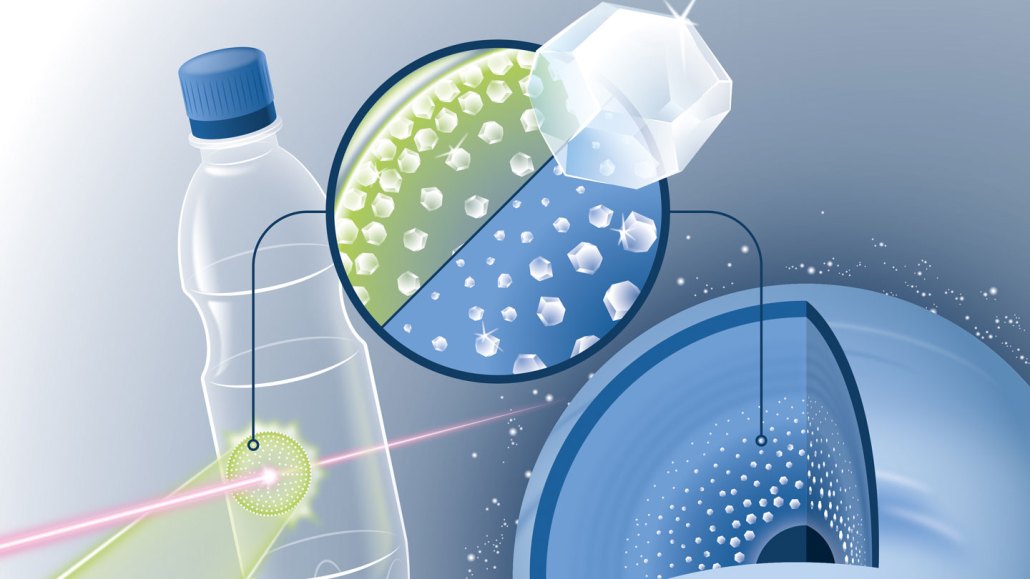Zapping plastic with a laser forged tiny diamonds
The result suggests diamonds could shower down within planets such as Neptune and Uranus

Starting from the same type of plastic found in soda bottles, scientists created tiny nanodiamonds (illustrated in inset). Researchers zapped the plastic with a laser (green) and probed it with X-rays (red). The work suggests that diamonds may form within ice giant planets such as Uranus and Neptune (lower right).
HZDR/Blaurock







